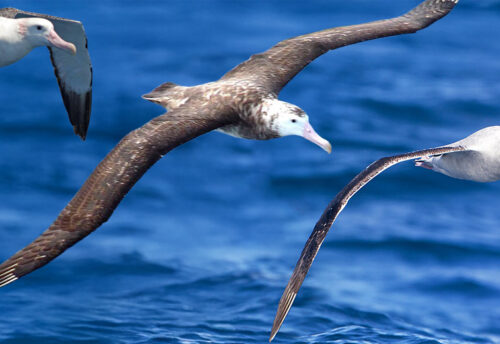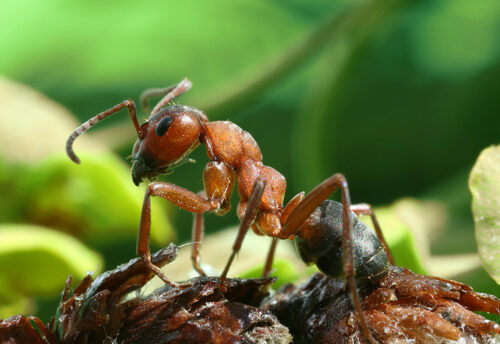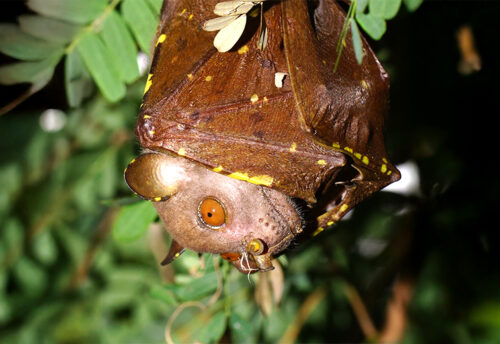
The red-tailed phasogale, aka red-tailed wambenger, red-tailed mousesack, or kenngoor, is a diminutive, carnivorous marsupial that dwells among the inland areas of south-western to western Australia, and has been reintroduced in sanctuaries in western Australia as well as the Northern Territory. These little critters face the threats of habitat loss and destruction at the hands of farming, ranching, fires, and fire suppression efforts; invasive species, that can result in predation; and climate change, that causes severe droughts. The IUCN lists these marsupials as Near Threatened and their population trend is listed as decreasing.
First the Stats…
Scientific name: Phascogale calura
Weight: Up to 2.4 ounces
Length: Up to 4.8 inches, plus up to a 5.71 inch tail
Lifespan: Up to 5 years
Now on to the Facts!
1.) As of 2024 there were only an estimated 20,000- wild individuals remaining.
2.) Red-tailed phascogales are 1 of 3 members of the phascogale genus, the others being the brush-tailed phascogale and the Northern brush-tailed phascogale.
3.) These marsupials were described in 1844 by ornithologist John Gould.
4.) Their scientific name translates to “beautiful-tailed pouched-weasel”.
5.) Rarely living past 11.5 months, males die following their first mating as a result of stress-related diseases.
But wait, there’s more on the red-tailed phasogale!
6.) That being said, if kept from breeding, males and even females can survive up to 5 years in captivity.
7.) These little marsupials are arboreal (spend most or all of their lives in trees).
Did you know…?
These rather springy marsupials can leap upwards of 6 feet 7 inches!
8.) Insects, spiders, small birds, and small mammals (particularly the house mouse) are all on the menu for these little carnivores (eat meat).
9.) They do not drink standing water, as they have evolved to obtain all their necessary water requirements from the prey they consume.
10.) These marsupials prefer thick and tall climax vegetation, as well as preferring those containing the Wandoo (Eucalyptus wandoo) and the rock sheoak, as they have developed a resistance to the fluoroacetate the plants produce that is lethal to livestock.
But wait, there’s still more on the red-tailed phasogale!
11.) Most native Australian animals have a resistance to the chemical fluoracetate, but introduced species, like the red fox find it poisonous and lethal.
12.) In 2009 these critters were reintroduced to the Wadderin Sanctuary in the central wheatbelt of Western Australia.
Did you know…?
Red-tailed phascogales consume up to 39% of their body mass in food each day!
13.) Recent conservation efforts in Central Australia have been rewarding, and 30 individuals were released at the remote Newhaven Wildlife Sanctuary, near Lake Mackay, Northern Territory in June of 2020 after a captive breeding program at the Alice Springs Desert Park.
14.) The animals were microchipped before their release, and will be tracked for the rest of their short lives.
15.) Females undergo up to a 30 day gestation (pregnancy) that can yield up to 13 joeys!
But wait, there’s still a bit more on the red-tailed phasogale!
16.) Even though up to 13 joeys are born, only 8 will survive, as the female only has 8 teats.
17.) The joeys that survive remain in their mother’s pseudo-pouch (temporary pouch) for up to an additional 50 days.
Did you know…?
The serum of these phascogales has been shown to have antimicrobial properties against some bacterial species.
18.) After 50 days, the joeys are moved to a nest where they will continue to develop for up to another 8 months.
19.) These phascogales have been used in studies of the marsupial immune system, development of their immune tissues, and expression and localization of key immune cells. They have an active complement system, like other marsupials, and the expression levels of complement components vary in the developing young.
20.) Due to their semelparous reproductive strategy (where an organism reproduces only once in its lifetime, often followed by death) they have been investigated in terms of their immunosenescense in captivity and immune response. Immunosenescense is defined by age-related decline in the function of the immune system, making individuals more susceptible to infections, autoimmune diseases, and cancer.
21.) Their primary predators are domestic and feral cats, red foxes, and owls.
Now a Short Red-Tailed Phasogale Video!
Be sure to share & comment below! Also, check out the Critter Science YouTube channel. Videos added regularly!

Want to suggest a critter for me to write about? Let me know here.
Some source material acquired from: Wikipedia & IUCN
Photo credit: Mark Marathon



